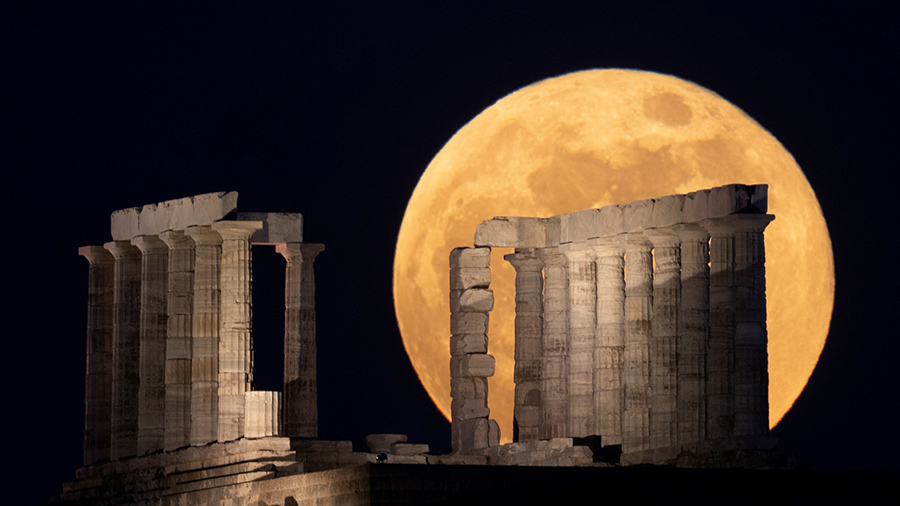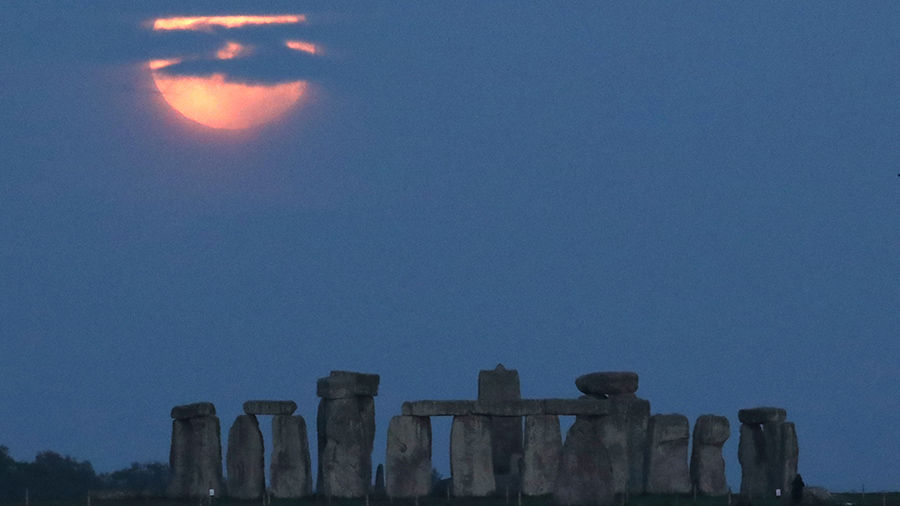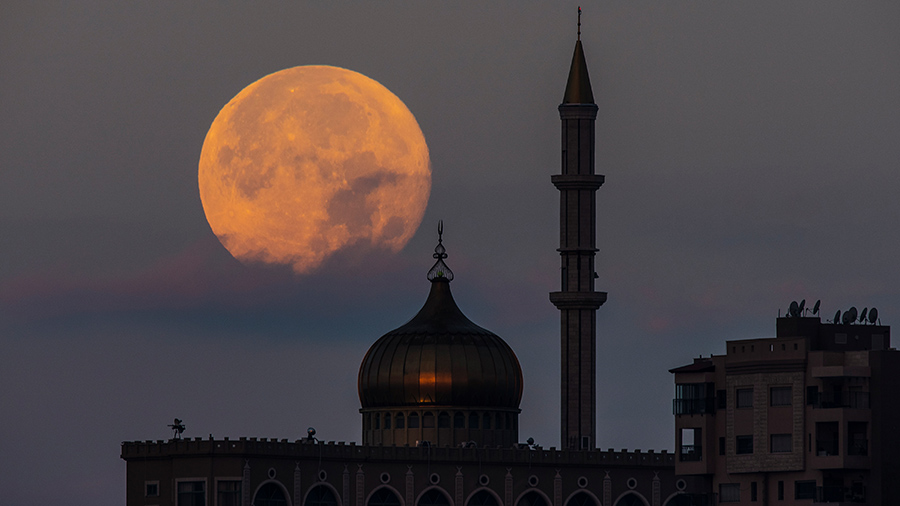01:00

On Wednesday May 26, watchful stargazers around the world looked up at the night sky to see the biggest moon to appear this year.
The "Super Flower Moon" was visible across the world, though those living across the Pacific had the chance to admire an even rarer event when a lunar eclipse turned the moon into a red "blood" moon.
It was the second supermoon of the year after one on April 26 and it was the last one of this year.

The 'Super Flower Moon' rises over the Temple of Poseidon in Cape Sounion, near Athens, in Greece. /Reuters/Alkis Konstantinidis
The 'Super Flower Moon' rises over the Temple of Poseidon in Cape Sounion, near Athens, in Greece. /Reuters/Alkis Konstantinidis

The supermoon can be spotted behind the clouds on the sky above the Stonehenge stone circle near Amesbury, in the UK. /Reuters/Peter Cziborra
The supermoon can be spotted behind the clouds on the sky above the Stonehenge stone circle near Amesbury, in the UK. /Reuters/Peter Cziborra

The supermoon over the Nabi Sain Mosque in Nazareth, northern Israel. /Reuters/Jamal Kiwan
The supermoon over the Nabi Sain Mosque in Nazareth, northern Israel. /Reuters/Jamal Kiwan
"Supermoon" is an unofficial term that refers to the phenomenon that occurs every time a new or full moon reaches its perigee, the closest point to Earth in the moon's monthly orbit.
On these rare occasions, the moon can look up to 7 percent bigger than usual – and 14 percent larger than when it's at its apogee, the furthest point from our planet.
May's supermoon was named after the many flowers blooming across North America in May by the Algonquin tribes, according to the Old Farmer's Almanac, which every year provides the region with weather forecasts and astronomical data.
Video Editor: Natalia Luz.
Cover image: Reuters/Borja Suarez
Source(s): Reuters

